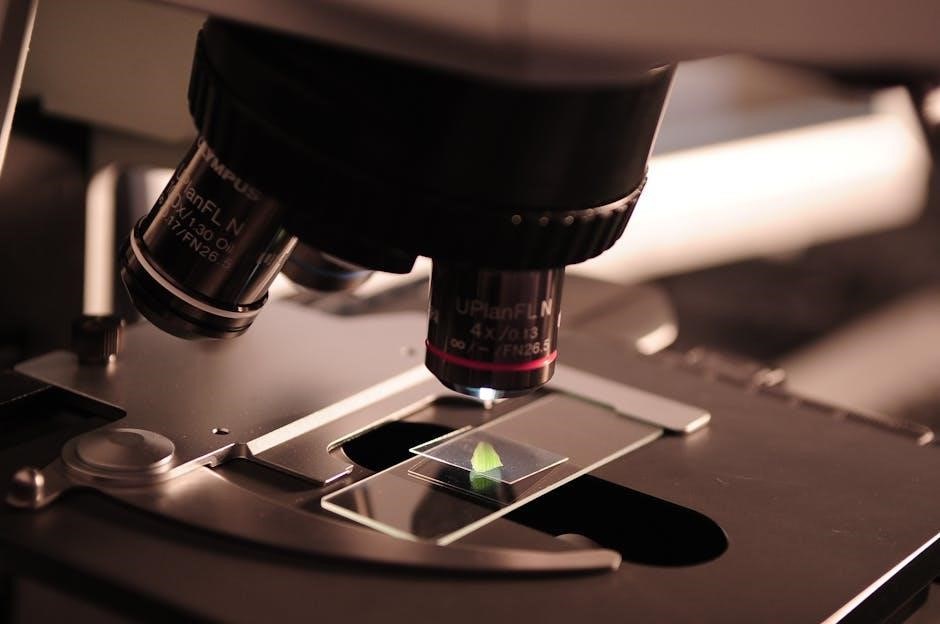
lab equipment worksheet answers pdf
Thesis Statement
This guide provides a comprehensive overview of lab equipment, detailing their functions and practical applications, ensuring students can accurately identify and use essential tools in scientific settings effectively.
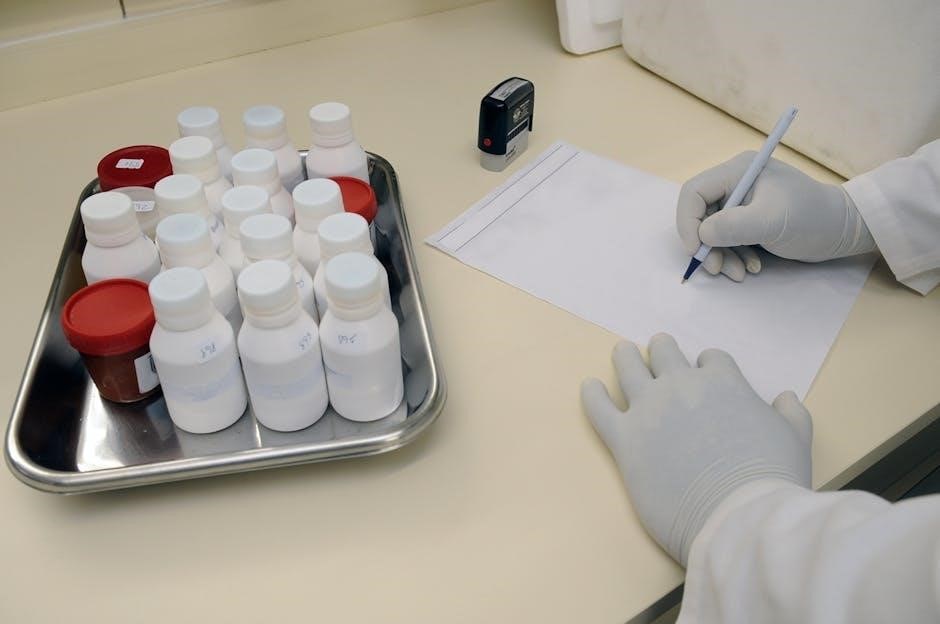
Common Lab Equipment and Their Functions
Essential lab tools include tongs for handling hot objects, goggles for eye protection, Bunsen burners for heating, and test tubes for holding chemical samples during experiments.
Essential Lab Equipment
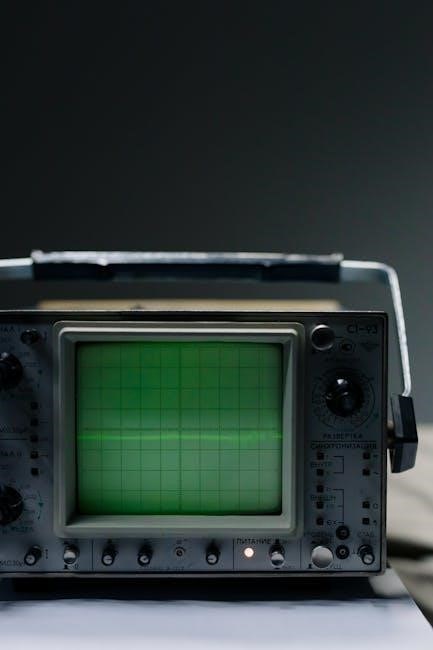
The most commonly used lab tools include beakers, which are cylindrical containers for holding liquids, and Erlenmeyer flasks, ideal for mixing and heating substances. Graduated cylinders measure precise liquid volumes, while test tubes hold small samples for reactions. Bunsen burners provide controlled heat for experiments, and clay triangles support crucibles during heating. Tongs are used to handle hot objects, and goggles protect eyes from chemical splashes. Lab balances measure masses accurately, and retort stands secure equipment like burettes or flask. These tools form the backbone of laboratory operations, enabling precise and safe experimentation. Understanding their functions is crucial for conducting lab work effectively.
Safety Equipment
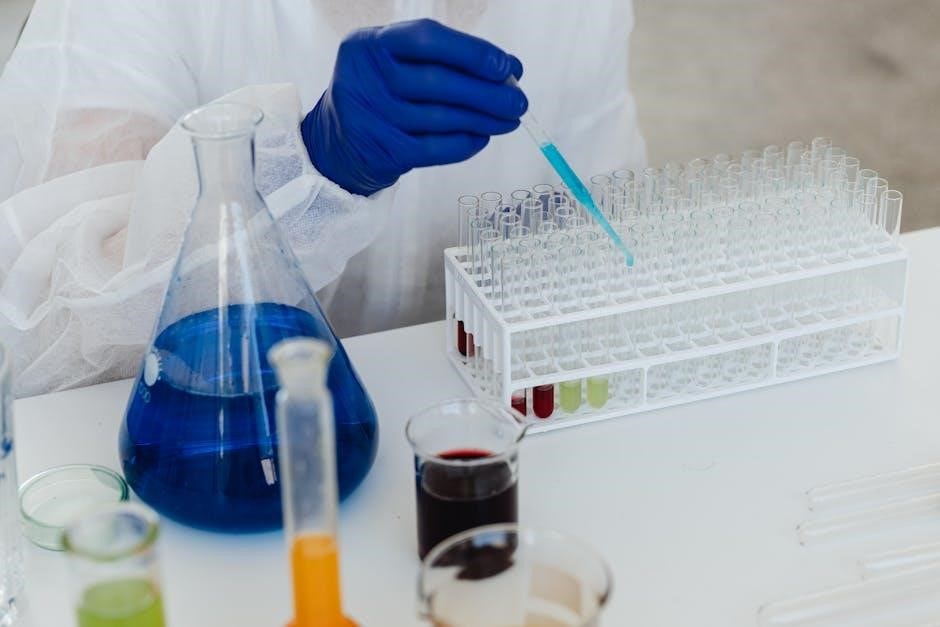
Safety equipment is vital in laboratories to prevent accidents and protect personnel. Lab goggles shield eyes from chemical splashes or broken glass, while gloves protect hands from hazardous substances. Lab coats provide a barrier against chemicals and heat, and closed-toe shoes prevent foot injuries. Fume hoods ventilate harmful vapors, ensuring safe inhalation. Fire extinguishers and emergency showers are essential for immediate responses to fires or spills. First aid kits are stocked with supplies to treat minor injuries. Proper use of this equipment minimizes risks and ensures a secure working environment. Familiarity with safety tools is a fundamental aspect of laboratory training, emphasizing the importance of preparedness and caution in all scientific activities.
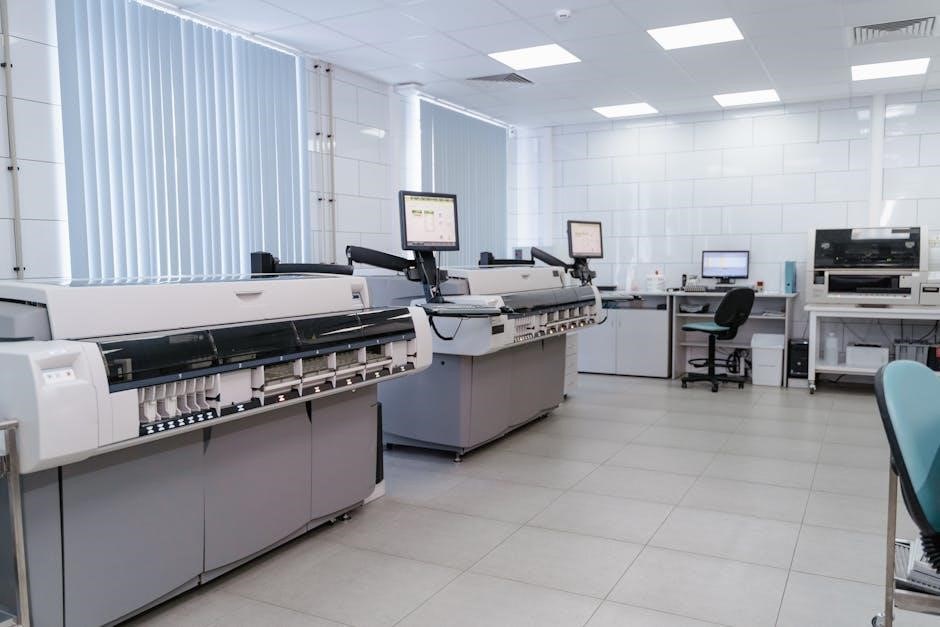
Lab Equipment Identification Techniques
Techniques like using a dichotomous key or matching equipment to tasks enhance lab tool recognition. These methods help students systematically identify and understand the purpose of each instrument.
Matching Equipment to Tasks
Matching lab equipment to specific tasks is a practical way to understand their purposes. For instance, a graduated cylinder is ideal for measuring liquids, while a Bunsen burner is used for heating. Tongs are perfect for handling hot objects, and goggles protect eyes during experiments. A flask stores liquids, and a test tube rack organizes samples. By associating each tool with its task, students can efficiently identify and use equipment, enhancing their lab skills. This method also helps in preparing for worksheets and assessments, ensuring accurate answers. It’s a foundational skill for any science student, bridging theoretical knowledge with practical application.
Using a Dichotomous Key
A dichotomous key is a valuable tool for identifying lab equipment by narrowing down options through a series of paired questions. For example, it might ask, “Is the equipment used for measuring liquids?” If yes, the next question could differentiate between a graduated cylinder and a beaker. This method helps students systematically identify equipment based on physical characteristics and functions. It also enhances critical thinking and problem-solving skills. By following the key’s branching questions, learners can accurately match equipment to their descriptions, making it an effective strategy for completing worksheets or assessments. This approach is particularly useful for beginners, as it breaks down complex identification processes into simple, logical steps.
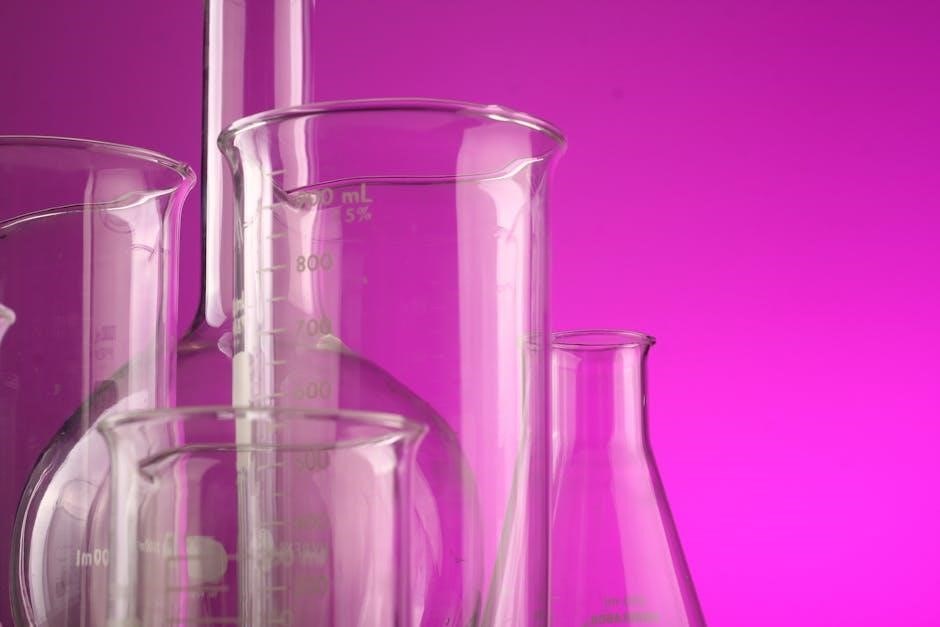
Lab Equipment Worksheet Answer Key
This section provides clear answers to common lab equipment identification tasks. It includes charts and lists matching equipment names with their specific functions, ensuring accurate understanding.
- Tongs: For handling hot objects.
- Goggles: Protects eyes from hazards.
- Bunsen Burner: Used for heating or burning.
- Clay Triangle: Supports crucibles during heating.
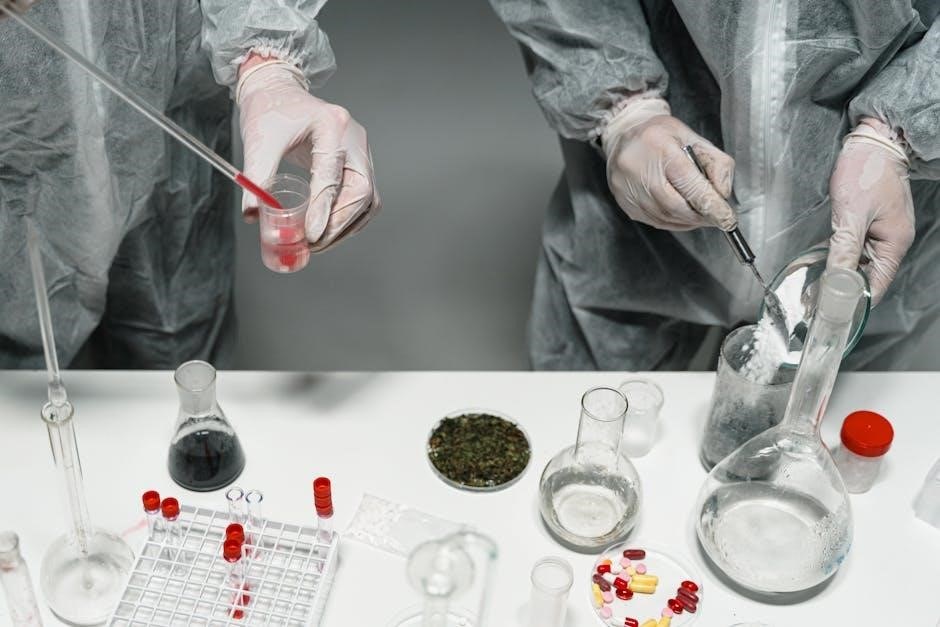
Object Name and Function Chart
This chart provides a detailed matching of lab equipment names with their respective functions, aiding students in quick identification and understanding. Each entry is paired for clarity.
- Tongs: Used to handle hot objects safely.
- Goggles: Protects eyes from chemical splashes or debris.
- Bunsen Burner: Generates a controlled flame for heating substances.
- Clay Triangle: Supports crucibles during heating processes.
- Funnel: Directs liquids or powders into containers accurately.
- Graduated Cylinder: Measures precise volumes of liquids.
- Test Tube Rack: Holds test tubes securely during experiments.
- Evaporating Dish: Used for heating substances to concentrate solutions.

This chart serves as a practical tool for lab preparation and learning, ensuring students can identify and use equipment confidently in various scientific tasks.
Crossword and Word Bank Activities
Engage students with interactive learning through crosswords and word banks, designed to reinforce familiarity with lab equipment names and functions. The crossword includes a word bank featuring essential items like Funnel, Dissecting Pins, Florence Flask, and Graduated Cylinder, guiding students to match terms with their descriptions. This activity enhances vocabulary retention and recognition, making complex terms accessible. By connecting words to their functions, students build a strong foundation in lab terminology. Ideal for young learners, these exercises promote active participation and make learning enjoyable. The word bank also includes visuals, aiding those who learn better through images. Such interactive methods ensure students can identify and name equipment confidently, preparing them for practical lab work.

Practical Applications of Lab Equipment
Lab equipment is utilized for specific tasks, such as heating, measuring, and protecting, ensuring safe and accurate experiments in various scientific settings and educational environments.
Equipment for Specific Tasks
Lab equipment is designed for precise functions, ensuring accuracy and safety in experiments. A Bunsen burner is used for heating substances, while tongs are for handling hot objects. Goggles protect eyes from chemical splashes, and graduated cylinders measure liquids accurately. A retort stand secures equipment during experiments, and a Florence flask stores liquids. Funnel directs liquids into containers, and an evaporating dish is used for heating substances to concentrate them. Each tool is matched to specific tasks to optimize laboratory operations and ensure safe, efficient workflows in scientific settings.
Securing Lab Equipment
Securing lab equipment is essential for safety and stability during experiments. Many tools, like Bunsen burners and flasks, are often clamped or tied to ring stands to prevent movement. Clamps and stands are commonly used to hold equipment in place, ensuring it remains stable. For example, a clay triangle is secured to a ring stand to suspend heated objects. Proper securing prevents accidents, such as equipment falling or breaking, which could lead to injuries or contamination. Additionally, storing equipment correctly after use is crucial for longevity. Cabinets, trays, and labeled storage areas help maintain organization and accessibility. By following these practices, labs can ensure a safer, more efficient working environment.
Understanding and correctly identifying lab equipment is crucial for conducting experiments safely and effectively. By mastering the names, functions, and proper uses of essential tools, students can enhance their laboratory skills. This guide has provided detailed insights into common lab equipment, safety measures, and practical applications. Matching equipment to specific tasks and using techniques like dichotomous keys can improve efficiency. Additionally, securing equipment properly and maintaining organization are vital for a safe and productive lab environment. By following these guidelines, learners can confidently navigate laboratory settings, ensuring accurate results and minimizing risks. This comprehensive approach to lab equipment fosters a deeper appreciation for scientific practices and prepares individuals for advanced experiments and real-world applications.